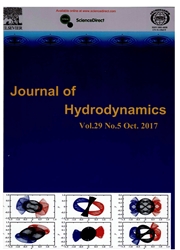

 中文摘要:
中文摘要:
水的植被在水里在流动上有重要效果。在这篇文章,水区域的四种类型在在为东方线的南西·莱克的深度和植被在中国(WTSNC ) 从南方水转移投射到诺思的水上根据地调查被分析。有或没有流动上的水的植被的效果的考虑的平均深度的 2-D 水动力学模型被建立在南西·莱克在生长生长 andnon 的地区模仿流动地。与确定的模型一起,流动地从南方在水转移的条件下面被预言到北方。结果显示当水的植被施加的drag 力量条款被考虑时,计算速度与测量数据同意很好,而作为drag 条款被考虑,计算速度显然比在生长地区并且更加的测量数据大在 non-vegetatedzone ,和在二速度之间的错误范围更小如果这个问题被处理,大增加湖床的粗糙系数反映植被的方法拖力量。另外,出现植被比在出现植被(芦苇) 地区(EVZ ) 和沉没植被地区(SVZ ) 比较结果的沉没植被在流动上施加更大的效果,这被表明。
 英文摘要:
英文摘要:
Aquatic vegetation has significant effects on flow in waters. In this article, four types of water areas were analyzed according to the field survey on water depth and vegetation in the Nansi Lake for the East Line Project of Water Transfer from South to North in China (WTSNC). The depth-averaged 2-D hydrodynamic models with and without consideration of the effects of aquatic vegetation on flow were established to simulate flow fields in vegetated and non-vegetated zones in the Nansi Lake. With the established models, flow fields were predicted under the conditions of water transfer from south to north. The results indicate that when the drag force term exerted by aquatic vegetation is considered, the computed velocities agree well with the measured data, whereas as the drag term is taken into account, the computed velocities are obviously larger than the measured data in the vegetated zone and considerably smaller in the non-vegetated zone, and the error range between the two velocities is large if this problem is dealt with the method of increasing the roughness coefficient of the lake-bed to reflect the vegetation drag force. In addition, it is demonstrated that the emerged vegetation exerts larger effects on flow than submerged vegetation comparing the results in the Emerged Vegetation (reed) Zone (EVZ) and the Submerged Vegetation Zone (SVZ).
 同期刊论文项目
同期刊论文项目
 同项目期刊论文
同项目期刊论文
 期刊信息
期刊信息
